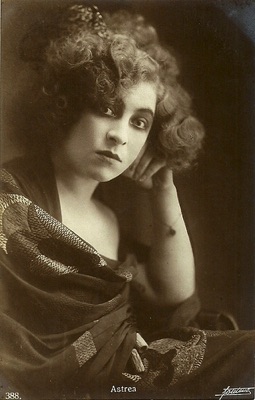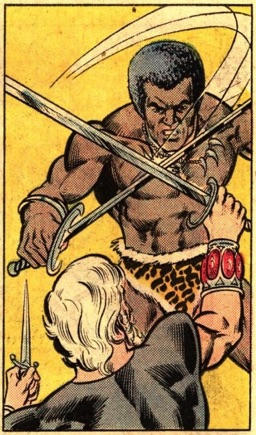research topics
The history of the peplum is quite long, and a number of areas remain underexplored.
1) Perhaps the most underexplored area in the study of the peplum is women, their bodies, their strength, their significance. It is easy to look exclusively at the presence of the male body and think about how the peplum constructs masculinity, but from the very beginning, there were rare but important examples of the strong woman, and not just the strongman. In the silent era, the actress Astrea was billed as an "emula" (female imitator) of Maciste, and while attractive, she was also extremely tall and gave the impression of a muscular solidity. Amazons regularly appeared throughout the mid-century peplum era (see, for example, Thor and the Amazon Women and ), although usually—as in the 1958 Hercules—as unthreatening bathing beauties, and they show up in the television peplums of the 1990s, including BeastMaster and Hercules: The Legendary Journeys. There are plenty of fighting women (usually former Miss Teen Idaho or Playboy Playmates) found in the peplums of the 1970s and 80s (see the rather interesting The Arena, an Italian-US film that is simultaneously a sexploitation-blaxploitation-women in prison-peplum all at once). Perhaps the most important case to look at, however, is the television series Xena: Warrior Princess, whose protagonist, Lucy Lawless, like Astrea, gave the impression of physical power and confidence, and which resolutely pushed against the notion of the "woman warrior" as simply a way to titillate the male spectator.
2) In the early 1980s, a number of animated peplums flourished: He-Man and the Masters of the Universe, She-Ra: Princess of Power and Thundarr the Barbarian, briefly repeated in the early 1990s with Conan the Adventurer and Conan and the Young Warriors. But in fact, in the 1960s, there had already been an animated series The Mighty Hercules—and of course, we shouldn't forget the 1997 Disney Hercules, although I would argue that it is not a peplum at all, and has almost no connection to the peplum world. The other examples that I've mentioned, however, show very clear connections to the 1960s Italian peplum films. Almost all are available on YouTube, in whole and in part.
3) As a corollary, we might call attention to the long-standing relationship between the 1960s Italian peplum and American comics of the 1960s, 70s and 80s. I would mention in particular the Marvel Hercules (modelled on Steve Reeves in the 1958 Italian film), the DC series Hercules Unbound, and the DC comic The Warlord, which has a dark-skinned character named "Machiste," dressed like Bartolomeo Pagano in the 1914 Cabiria. The peplum has a long memory.
4) The peplum has generally not flourished on television. One series in the 1960s was immediately aborted after the first episode (now a stand-alone short film, Hercules and the Princess of Troy, available on YouTube). In the contemporary era, Spartacus: Blood and Sand and its subsequent two seasons (as well as one prequel season) became a cult hit, but does not seem to have led to anything else. In the 1990s, however, there were many short-lived televisual peplums: Hercules: The Legendary Journeys, Xena: Warrior Princess, BeastMaster (available in its entirety on YouTube) and a live-action Conan series with Ralf Möller also called Conan the Adventurer (easily confused with the animated series of the same name).
5) What does the peplum tell us about national cinema? About transnational cinema? About race on screen? About genre? About "trash" cinema? About the relationship between sports and film? Bodybuilding and film? About changing attitudes toward masculinity? About changing attitudes toward the male body? About the relationship between film and movement?


